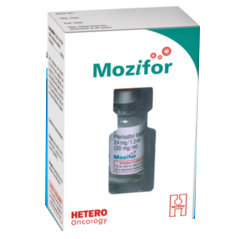Mozifer 1 Injection


MRP ₹40218.5
(Inclusive of all Taxes)
₹6032.8 Cashback (15%)
Provide Delivery Location
Online payment accepted
 Prescription drug
Prescription drugWhats That
Composition :
Manufacturer/Marketer :
Consume Type :
Expires on or after :
Return Policy :
About Mozifer 1 Injection
Mozifer 1 Injection belongs to the class of hemopoietic stem cell mobilizer. It is used in the treatment of Non-Hodgkin’s Disease (a blood cancer that affects your lymph system) and multiple myeloma (a type of cancer that affects the plasma cells of the bone marrow) in combination with granulocyte-colony stimulating factor (G-CSF).
Mozifer 1 Injection contains Plerixafor, which belongs to the hemopoietic stem cell mobilizer class or drugs. It works by binding to the chemokine receptor CXCR4 and inhibits the binding of its cognate ligand CXCL12.
Mozifer 1 Injection may cause certain side effects, such as nausea, vomiting, headache, dizziness, diarrhoea, flatulence, fatigue, and pain at the site of injection. These side effects do not require medical attention and gradually resolve over time. A trained healthcare professional will administer it. Do not self-administer.
Avoid taking it and inform your doctor if you are allergic to Mozifer 1 Injection or its components. Before administration, inform your doctor if you have liver/kidney disease, cardiac disorders, blood disorders or respiratory conditions. This medicine is known to cause fetal harm in pregnant women. Hence, inform your doctor if you are pregnant or are planning to become pregnant. Breastfeeding should be discontinued during the treatment.
Uses of Mozifer 1 Injection
Directions for Use
Key Benefits
Mozifer 1 Injection contains Plerixafor, which belongs to the hemopoietic stem cell mobilizer class or drugs. It works by binding to the chemokine receptor CXCR4 and inhibiting its cognate ligand CXCL12 binding. This mobilizes hematopoietic stem cells to the peripheral blood for collection and subsequent autologous transplantation in cancer patients.
Storage
- Inform Your Doctor: Notify your doctor immediately about your diarrhoea symptoms. This allows them to adjust your medication or provide guidance on managing side effects.
- Stay Hydrated: Drink plenty of fluids to replace lost water and electrolytes. Choose water, clear broth, and electrolyte-rich drinks. Avoid carbonated or caffeinated beverages to effectively rehydrate your body.
- Follow a Bland Diet: Eat easy-to-digest foods to help firm up your stool and settle your stomach. Try incorporating bananas, rice, applesauce, toast, plain crackers, and boiled vegetables into your diet.
- Avoid Trigger Foods: Steer clear of foods that can worsen diarrhoea, such as spicy, fatty, or greasy foods, high-fibre foods, and dairy products (especially if you're lactose intolerant).
- Practice Good Hygiene: Maintain good hygiene to prevent the spread of infection. To stay healthy, wash your hands frequently, clean and disinfect surfaces regularly, and avoid exchanging personal belongings with others.
- Take Anti-Diarrheal Medications: If your doctor advises, anti-diarrheal medications such as loperamide might help manage diarrhoea symptoms. Always follow your doctor's directions.
- Keep track of your diarrhoea symptoms. If they don't get better or worse or are accompanied by severe stomach pain, blood, or dehydration signs (like extreme thirst or dark urine), seek medical help.
- Injection site reaction can include numbness or redness.
- Get a physical examination, follow your doctor's instructions, if it worsens or gets swollen.
- Apply cold compress for pain relief.
- Practice good hygiene and keep the injection site away from heat and pressure.
- Inform your doctor about the nausea and discuss possible alternatives to the medication or adjustments to the dosage.
- Divide your daily food intake into smaller, more frequent meals to reduce nausea.
- Opt for bland, easily digestible foods like crackers, toast, plain rice, bananas, and applesauce.
- Avoid certain foods that can trigger nausea, such as fatty, greasy, spicy, and smelly foods.
- Drink plenty of fluids, such as water, clear broth, or electrolyte-rich beverages like coconut water or sports drinks.
- Use ginger (tea, ale, or candies) to help relieve nausea.
- Get adequate rest and also avoid strenuous activities that can worsen nausea.
- Talk to your doctor about taking anti-nausea medication if your nausea is severe.
- Record when your nausea occurs, what triggers it, and what provides relief to help you identify patterns and manage your symptoms more effectively.
- Rest well; get enough sleep.
- Eat a balanced diet and drink enough water.
- Manage stress with yoga and meditation.
- Limit alcohol and caffeine.
- Physical activities like walking or jogging might help boost energy and make you feel less tired.
- Hydrate your body: Drink enough water to prevent dehydration and headaches.
- Calm Your Mind: Deep breathing and meditation can help you relax and relieve stress.
- Rest and Recharge: Sleep for 7-8 hours to reduce headache triggers.
- Take rest: lie down in a quiet, dark environment.
- Cold or warm compresses can help reduce tension.
- Stay Upright: Maintain good posture to keep symptoms from getting worse.
- To treat headaches naturally, try acupuncture or massage therapy.
- Over-the-counter pain relievers include acetaminophen and ibuprofen.
- Prescription Assistance: Speak with your doctor about more substantial drug alternatives.
- Severe Headaches: Seek emergency medical assistance for sudden, severe headaches.
- Frequent Headaches: If you get reoccurring headaches, consult your doctor.
- Headaches with Symptoms: Seek medical attention if your headaches include fever, disorientation, or weakness.
- Please inform your doctor about joint pain symptoms, as they may adjust your medication regimen or prescribe additional medications to manage symptoms.
- Your doctor may prescribe common pain relievers if necessary to treat joint discomfort.
- Maintaining a healthy lifestyle is key to relieving joint discomfort. Regular exercise, such as low-impact sports like walking, cycling, or swimming, should be combined with a well-balanced diet. Aim for 7-8 hours of sleep per night to assist your body in repairing and rebuilding tissue.
- Applying heat or cold packs to the affected joint can help reduce pain and inflammation.
- Please track when joint pain occurs and any factors that may trigger it, and share this information with your doctor to help manage symptoms.
- If your joint pain is severe or prolonged, consult a doctor to rule out any underlying disorders that may require treatment.
- Inform your doctor about dizziness symptoms. They may adjust your medication regimen or prescribe additional medications to manage symptoms.
- Follow your doctor's instructions for taking medication, and take it at the same time every day to minimize dizziness.
- When standing up, do so slowly and carefully to avoid sudden dizziness.
- Avoid making sudden movements, such as turning or bending quickly, which can exacerbate dizziness.
- Drink plenty of water throughout the day to stay hydrated and help alleviate dizziness symptoms.
- If you're feeling dizzy, sit or lie down and rest until the dizziness passes.
- Track when dizziness occurs and any factors that may trigger it, and share this information with your doctor to help manage symptoms.
Drug Warnings
Mozifer 1 Injection should be avoided if you are allergic to it or any other components present in it. Let your doctor know about your complete medical history, including current medication, to rule out any side effects/interactions. Before administration, inform your doctor if you have liver/kidney disease, cardiac disorders, blood disorders, anaemia, or respiratory conditions. Mozifer 1 Injection may cause the potential for tumor cell mobilization in leukemia patients, haematological effects, and splenic rupture in some patients. Hence, careful monitoring should be done during the entire treatment. This medicine is known to cause fetal harm in pregnant women. Hence, inform your doctor if you are pregnant or are planning to become pregnant. Breastfeeding should be discontinued in nursing mothers during the treatment. Mozifer 1 Injection should be avoided in children as safety is not established.
Drug-Drug Interactions
Drug-Drug Interactions
Login/Sign Up
Drug-Food Interactions
Drug-Food Interactions
Login/Sign Up
Diet & Lifestyle Advise
- After your treatment begins, several dietary adjustments can help you control side effects.
- Anyone suffering from a chronic illness, including cancer, should consume foods high in protein, healthy fats, whole grains, and vitamins and minerals.
- Plant-based proteins are among the greatest meals to take during chemotherapy or other cancer treatments. They have the highest concentrations of vitamins and minerals, such as nuts, seeds, beans, and legumes.
- Eat a healthy diet and exercise regularly to maintain proper weight.
- Include leafy vegetables, citrus fruits, fatty fish, berries, yoghurt, apples, peaches, cauliflower, cabbage, broccoli, beans, and herbs.
- De-stress yourself by meditating, reading books, taking a warm bubble bath or listening to soothing music.
- Get optimal sleep; rest well.
- Avoid smoking and alcohol consumption.
- Avoid fast and fried food, processed meats, refined carbs and added sugars.
Side Effects of Mozifer 1 Injection
- Nausea
- Dizziness
- Stomach upset
- Headache
- Vomiting
- Insomnia
- Arthralgia
- Diarrhoea
- Pain at the site of injection
Habit Forming
Therapeutic Class
All Substitutes & Brand Comparisons
RX
Out of StockCelstemx 24mg Injection
Sayre Therapeutics Pvt Ltd
₹29000
(₹11890.0/ 1ml)
63% CHEAPERRX
Out of StockPlerixa 24 mg Injection 1.2 ml
Therdose Pharma Pvt Ltd
₹26776
(₹18296.92/ 1ml)
44% CHEAPERRX
Mostim 24Mg/1.2Ml Inj
Cadila Healthcare Ltd
₹28115.5
(₹19212.25/ 1ml)
41% CHEAPER
Product Substitutes
Author Details
We provide you with authentic, trustworthy and relevant information
Drug-Diseases Interactions
Drug-Diseases Interactions
Login/Sign Up
FAQs
Mozifer 1 Injection contains Plerixafor, which works by binding to the chemokine receptor CXCR4 and inhibits the binding of its cognate ligand CXCL12.
Mozifer 1 Injection may cause tumor cell mobilization and haematological effects such as increased lymphocytes, decreased platelet count, and splenic rupture in some patients. Hence, inform your oncologist about your complete medical history, including current medication, to rule out any side effects/interactions.
Special Advise
- A blood test should be performed, such as LFT, RFT, and PFT, to check for liver function and pulmonary function.
- Weekly blood tests should be done during the treatment to check for CBC (Complete blood count).
Disease/Condition Glossary
Non-Hodgkin’s lymphoma: Non-Hodgkin’s disease is a blood cancer that affects your lymph system. It causes the uncontrollable growth of cancer cells in the lymph nodes. The lymph system is a part of the immune system which protects your body from disease and infections. Symptoms include lymph node swelling, abdominal pain, chest pain, cough, fever, and night sweats.
Multiple myeloma: It is a type of cancerous tumour that affects the plasma cells of the bone marrow. These cells collect in the bone marrow and divide uncontrollably, leading to kidney and bone damage. Symptoms include bone pain, loss of appetite, fever, and frequent infections. Generally, multiple myeloma cannot be cured, but the signs and symptoms can be reduced greatly or disappear after a period of time.

Have a query?
Buy best Neoplastic Disorders products by
Intas Pharmaceuticals Ltd
Natco Pharma Ltd
Dr Reddy's Laboratories Ltd
Cipla Ltd
Celon Laboratories Pvt Ltd
Sun Pharmaceutical Industries Ltd
Alkem Laboratories Ltd
United Biotech Pvt Ltd
Zydus Cadila
Zydus Healthcare Ltd
Neon Laboratories Ltd
Glenmark Pharmaceuticals Ltd
Mylan Pharmaceuticals Pvt Ltd
BDR Pharmaceuticals Internationals Pvt Ltd
Emcure Pharmaceuticals Ltd
Adley Formulations
Samarth Life Sciences Pvt Ltd
Hetero Drugs Ltd
Torrent Pharmaceuticals Ltd
Fresenius Kabi India Pvt Ltd
Pfizer Ltd
Admac Lifesciences(Oncology)
Adley Pharmaceuticals Ltd
Novartis India Ltd
Halsted Pharma Pvt Ltd
Getwell Life Sciences India Pvt Ltd
Lupin Ltd
Cadila Healthcare Ltd
Hetero Healthcare Pvt Ltd
GLS Pharma Ltd
Reliance Formulation Pvt Ltd
Abbott India Ltd
Aimcad Biotech Pvt Ltd
Astra Zeneca Pharma India Ltd
Therdose Pharma Pvt Ltd
Axiommax Oncology Pvt Ltd
Biochem Pharmaceutical Industries Ltd
Khandelwal Laboratories Pvt Ltd
Msn Laboratories Pvt Ltd
Aureate Healthcare
Caitlin Oncology
Dabur India Ltd
Zee Laboratories Ltd
Sarabhai Chemicals (India) Pvt Ltd
Wembrace Biopharma Pvt Ltd
Delarc Pharmaceuticals Pvt Ltd
Medaegis Biotek Pvt Ltd
Panacea Biotec Ltd
RPG Life Sciences Ltd
Shilpa Medicare Ltd
Getwell Oncology Pvt Ltd
Ipca Laboratories Ltd
Miracalus Pharma Pvt Ltd
Biocon Ltd
Cadila Pharmaceuticals Ltd
Eli Lilly and Company (India) Pvt Ltd
Ferring Pharmaceuticals Pvt Ltd
Fresenius Kabi Oncology Ltd
Getwell Pharmaceutical Pvt Ltd
Maximal Healthcare Pvt Ltd
Boehringer Ingelheim India Pvt Ltd
Del Trade International Pvt Ltd
Sayre Therapeutics Pvt Ltd
Akumentis Healthcare Ltd
Corona Remedies Pvt Ltd
Eisai Pharmaceuticals India Pvt Ltd
GlaxoSmithKline Pharmaceuticals Ltd
Hilfen Pharmaceuticals Pvt Ltd
Johnson & Johnson Pvt Ltd
Mankind Pharma Pvt Ltd
Merck Ltd
Oncostar Pharma Pvt Ltd
Rhone Poulenc Rorer India Pvt Ltd
Vhb Life Sciences Inc
Zuventus Healthcare Ltd
Admac Pharma Ltd
Adonis Laboratories Pvt Ltd
Alniche Life Sciences Pvt Ltd
BPRL Pvt Ltd
Caitlin Life Care
Dr Care
German Remedies Ltd
Janssen Pharmaceuticals Pvt Ltd
MEDICAMEN BIOTECH LTD
Maxis Healthcare (I) Pvt Ltd
Pharm Products Pvt Ltd
Accord Life Spec Pvt Ltd
Amps Biotech Biotech Pvt Ltd
Aphia Healthcare
Astellas Pharma India Pvt Ltd
Bangalore Pharmaceutical and Research Laboratory Pvt Ltd (BPRL)
Bharat Serums and Vaccines Ltd
Cellgen Biopharma
Cosmic Life Sciences
Daris Biocare
East West Pharma India Pvt Ltd
Hillrock Biotech Pvt Ltd
Lucien Life Sciences
Maneesh Pharmaceuticals Ltd
Medilief Bioscience Pvt Ltd
Alcohol
Safe if prescribed
It is unknown whether Mozifer 1 Injection interacts with alcohol or not. Please consult your doctor.
Pregnancy
Consult your doctor
Mozifer 1 Injection is not recommended for use in pregnancy as it may harm your fetus. Hence, if you are pregnant or planning pregnancy, inform your doctor before receiving Mozifer 1 Injection. Effective birth control is necessary during treatment and for one week after your last dose.
Breast Feeding
Consult your doctor
Mozifer 1 Injection is not recommended if you are breastfeeding. You should not breastfeed while taking this medication and for one week after your last dose.
Driving
Safe if prescribed
Mozifer 1 Injection is generally administered to hospitalized patients. Driving is not advised after taking this medicine.
Liver
Consult your doctor
If you have a pre-existing or a history of liver disease, inform your doctor before receiving Mozifer 1 Injection. A dose adjustment may be made, or a suitable alternative may be advised based on your condition.
Kidney
Consult your doctor
If you have a pre-existing or a history of kidney disease, inform your doctor before receiving Mozifer 1 Injection. A dose adjustment may be made, or a suitable alternative may be advised based on your condition.
Children
Safe if prescribed
Mozifer 1 Injection is not recommended for use in children as the safety and efficacy are not established.





.jpg?tr=q-85)

